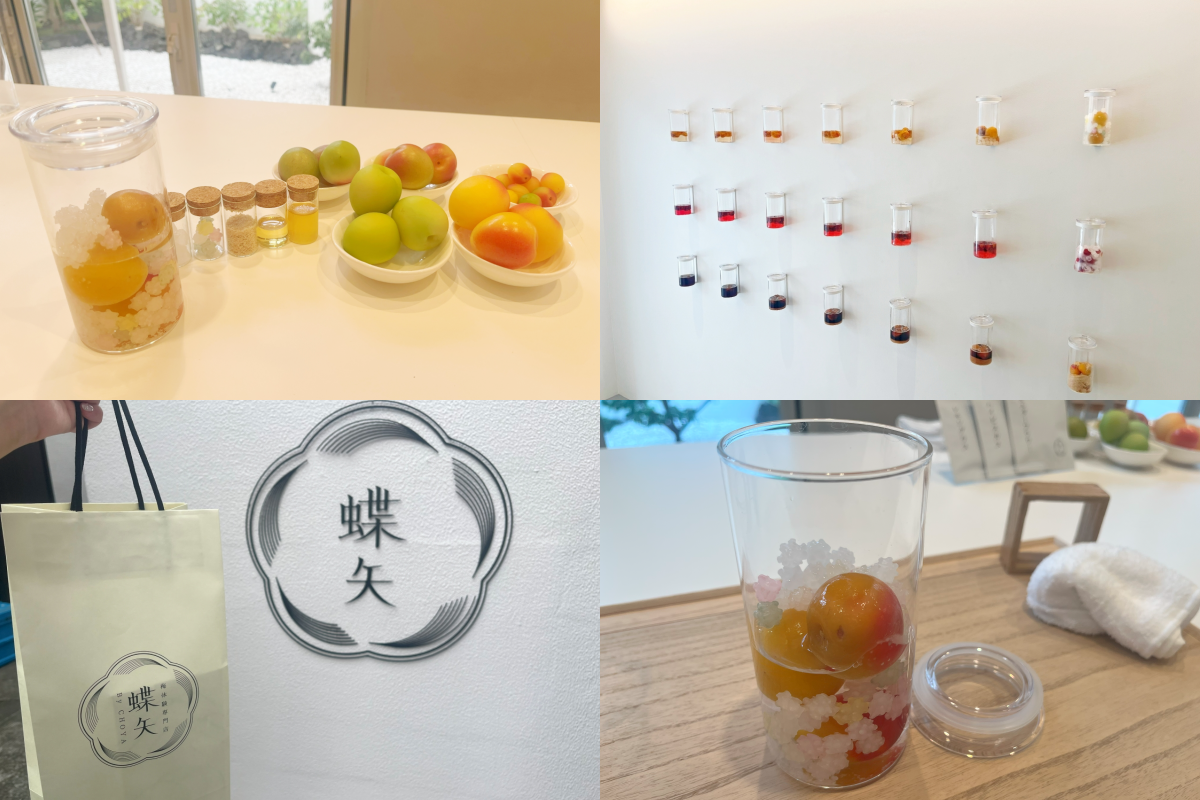
In Japan, from mid-May to mid-July, during the early summer, many people take to social media to share photos of themselves enjoying "Ume Shigoto" (plum work), which involves making their own plum wine or plum syrup at home. However, many of you might love plum wine but think it's too difficult to make yourself.
If that sounds like you, we highly recommend CHOYA, a specialty store for plum experiences produced by the renowned Japanese plum wine brand, Choya. Here, you can create your own original plum wine or plum syrup at any time of year, with over 100 possible combinations by choosing from five types of ume, five types of sugar, and four types of alcohol. This article will take a closer look at the unique plum-making experience you can enjoy at the CHOYA store, located right next to Kamakura Station in Kanagawa Prefecture.
*The consumption of alcohol by individuals under the legal drinking age is prohibited
What Kind of Drink is Plum Wine, and How Is It Made?
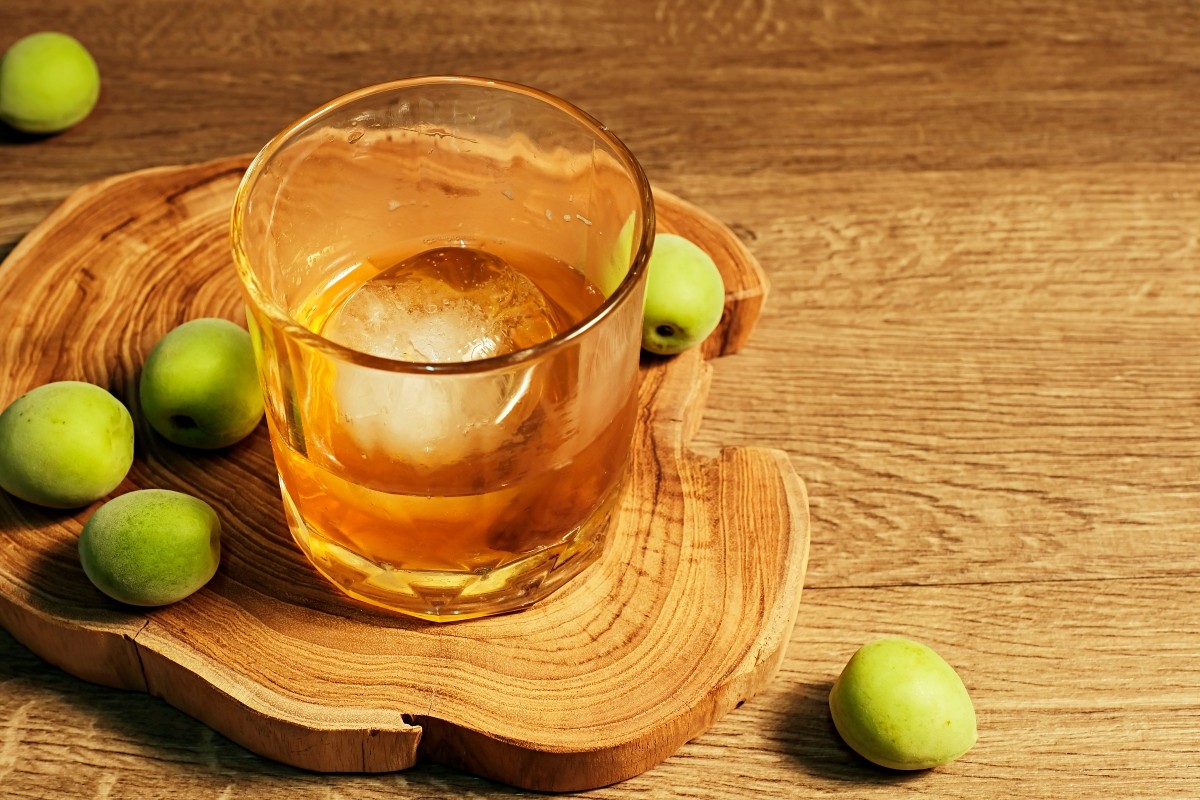
Plum wine, also known as umeshu, is a traditional Japanese alcoholic beverage that has been enjoyed for centuries. It's a type of fruit liqueur made by steeping ume plums in sugar and alcohol. After letting it sit for several months to a year, the plum's aroma and sourness dissolve into the alcohol, creating a sweet and refreshing flavor. Its fruity, gentle sweetness makes it popular with people who are sensitive to alcohol and women. A key part of its appeal is the fun of making it yourself and savoring how the flavor changes as it matures.
Once it's ready, you can enjoy plum wine in various ways: served straight, on the rocks, or mixed with soda or hot water. It's also possible to make plum syrup with just plums and sugar, without any alcohol. You can drink this like a juice or use it to add flavor to desserts.
【Related article】
Where Are Plums Grown?
The Famous Ume-Producing Region of Wakayama Prefecture, Which Accounts for Over 60% of Domestic Production
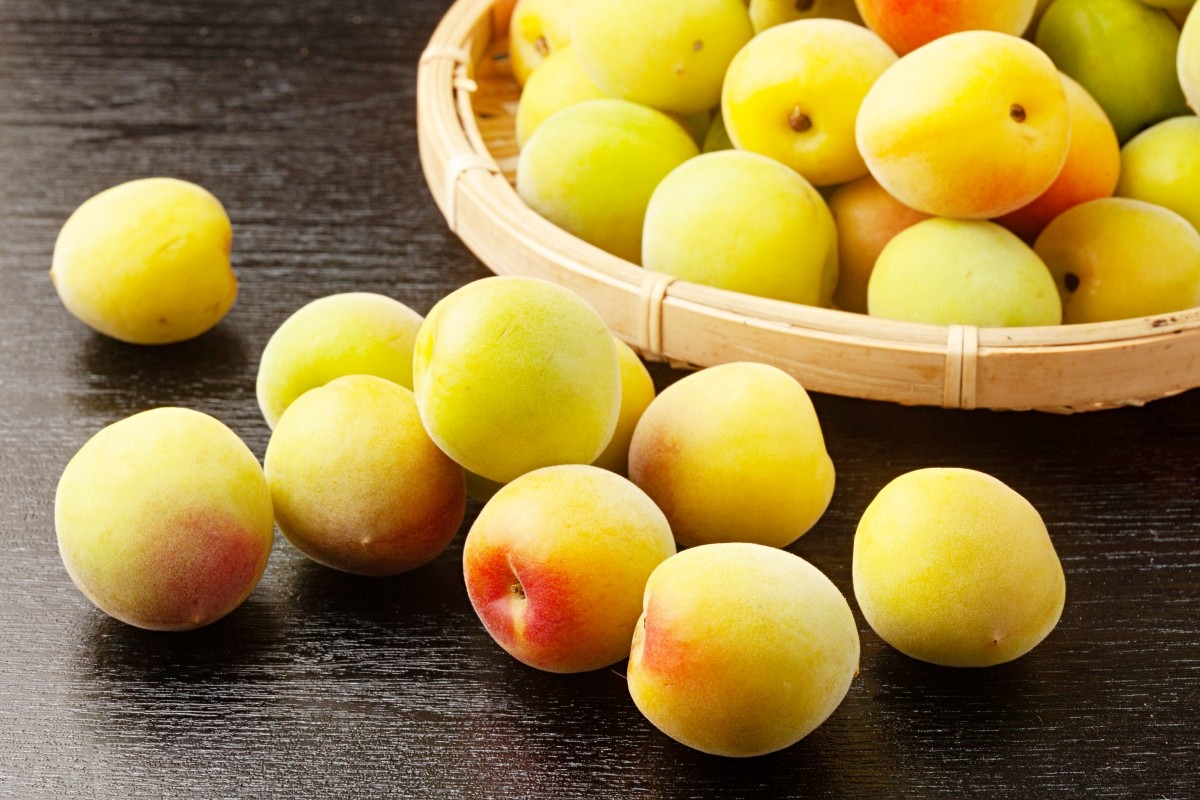
There are many plum-producing regions in Japan, but Wakayama Prefecture is by far the most famous. It boasts the highest plum production in Japan, and the plums grown there are called "Kishu Ume." Among them, the "Nanko Ume" variety is especially well-known. It's beloved by many for its soft, large flesh and rich aroma, making it perfect for making pickled plums (umeboshi) and plum wine.
In Tanabe City, Wakayama Prefecture, there is even a rare local ordinance called the "Plum Wine Toast Ordinance." This ordinance encourages toasting with Kishu plum wine and promotes the spread of plum products like umeboshi, helping to share the charm of Kishu ume throughout the community. If you visit, be sure to look for the signposts in the city that introduce this ordinance. This kind of initiative truly makes Wakayama Prefecture a "holy land of ume."
"CHOYA" The Ume Experience Specialty Shop Where You Can Create Your Own Plum Wine & Plum Syrup from 100 Combinations
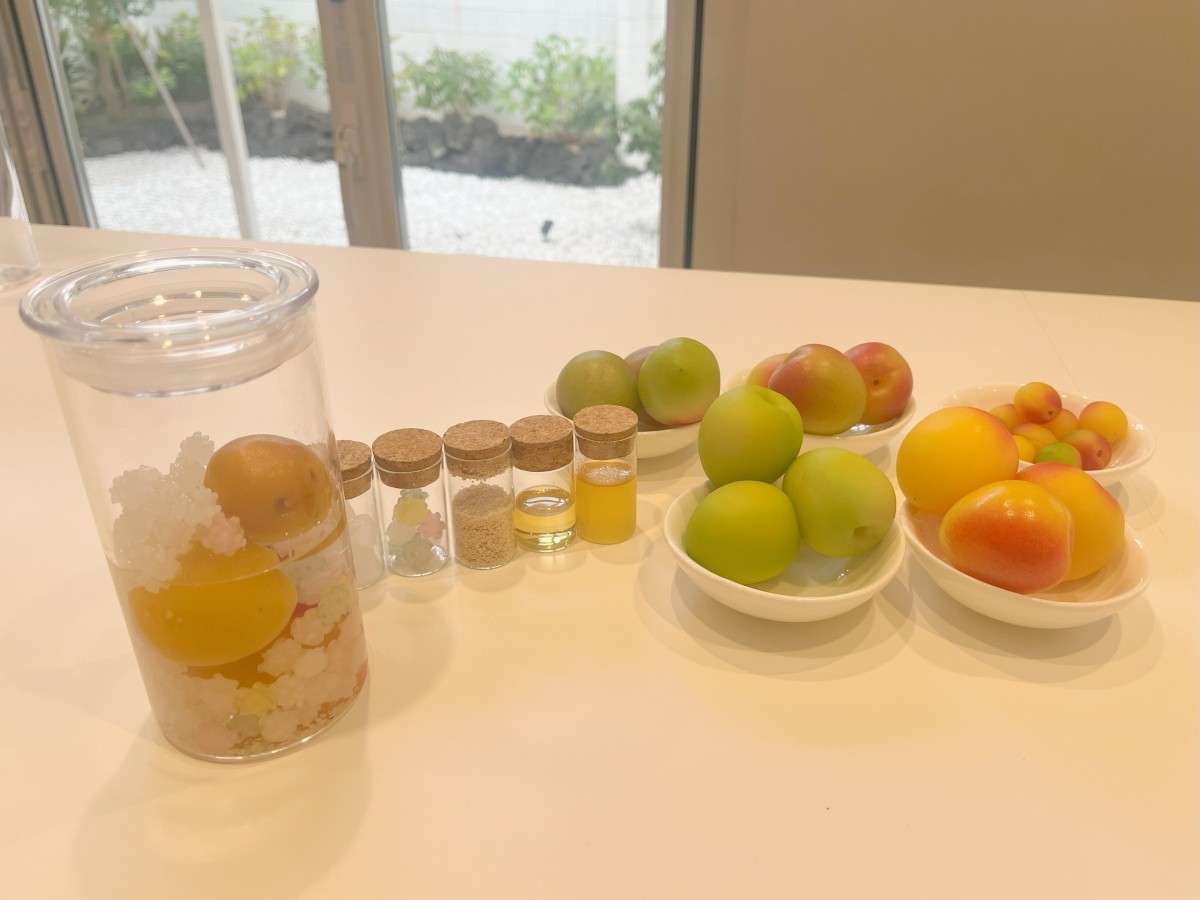
Thinking of trying your hand at plum wine making, but feel it's a hassle to gather all the ingredients and research the steps? Or perhaps you simply want to make your own original plum wine? If so, the Ume Experience Specialty Shop, CHOYA, is the perfect place for you. Produced by the famous Japanese plum wine brand Choya, it's a store where you can enjoy the charm of ume with all five senses. Anyone can easily create their own plum syrup or plum wine without any risk of failure, with over 100 possible combinations to choose from.
Just a 1-Minute Walk from Kamakura Station! CHOYA Kamakura Store
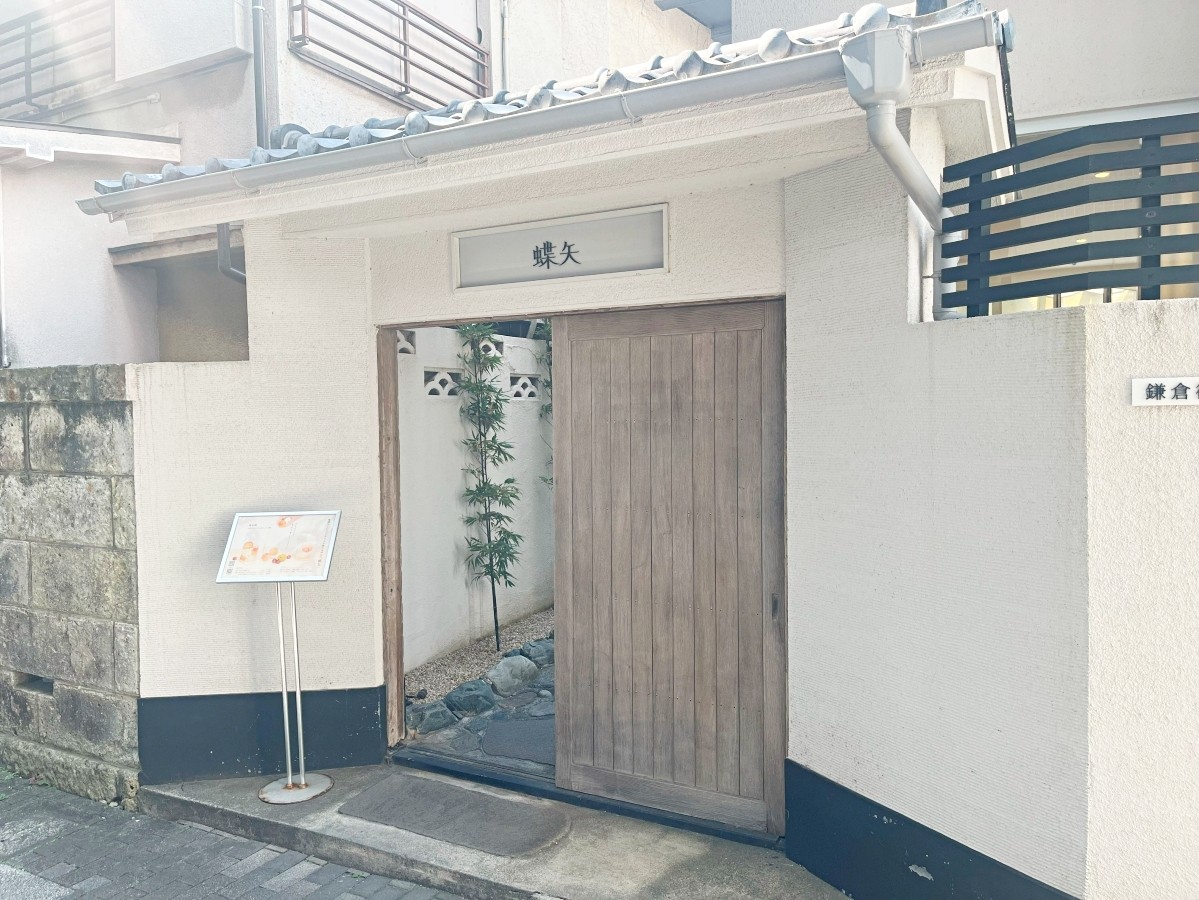
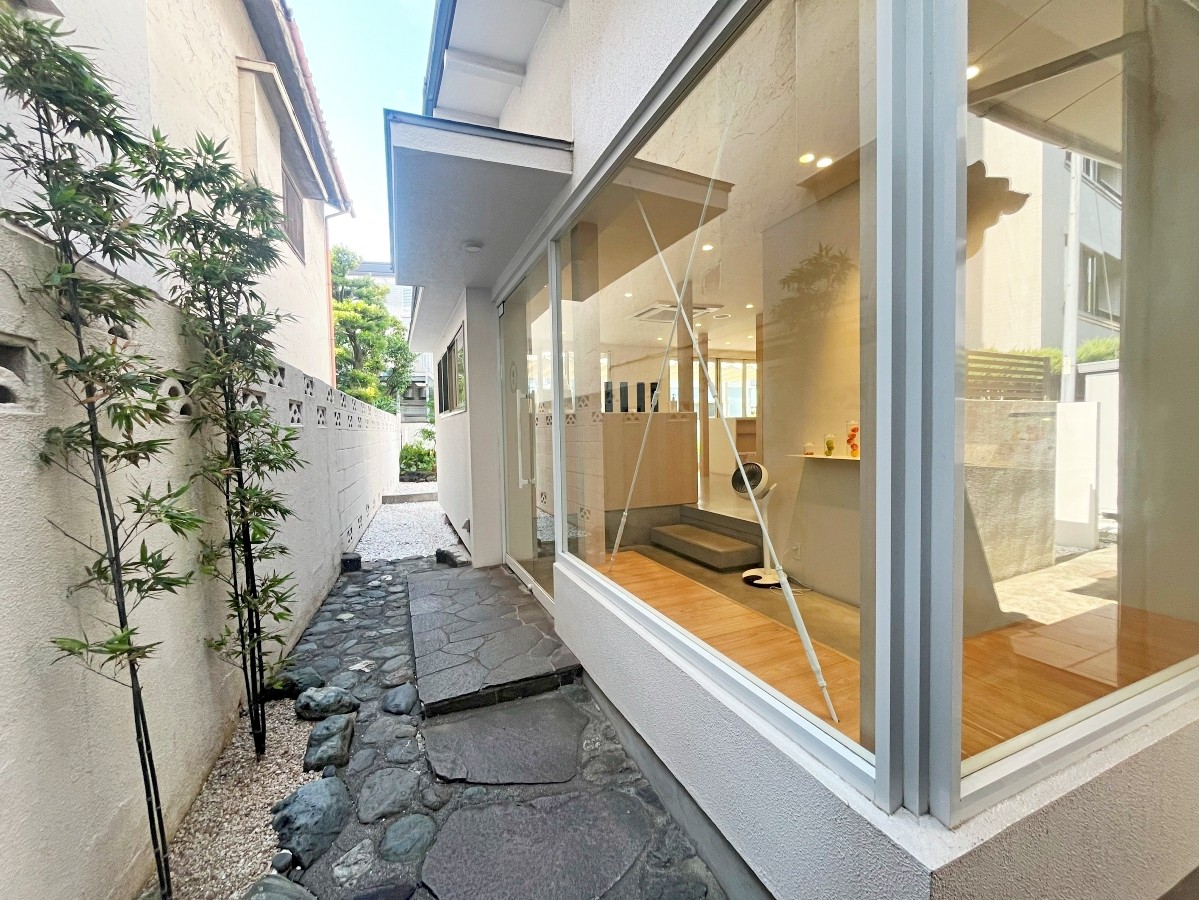
This time, we visited the CHOYA Kamakura store, located just a one-minute walk from Kamakura Station.
The exterior features a sophisticated, modern Japanese design, and the glass storefront creates a wonderfully open atmosphere.
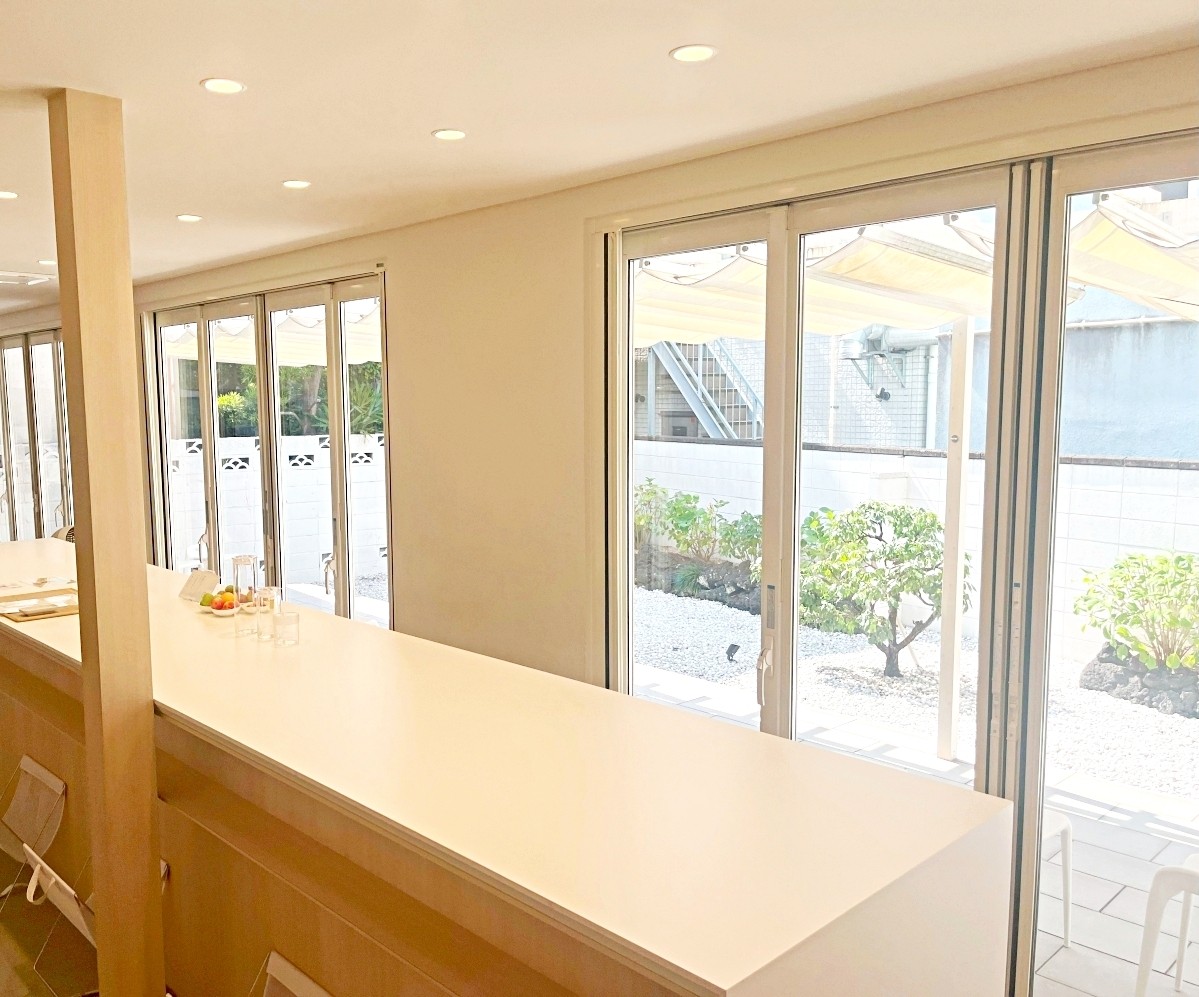
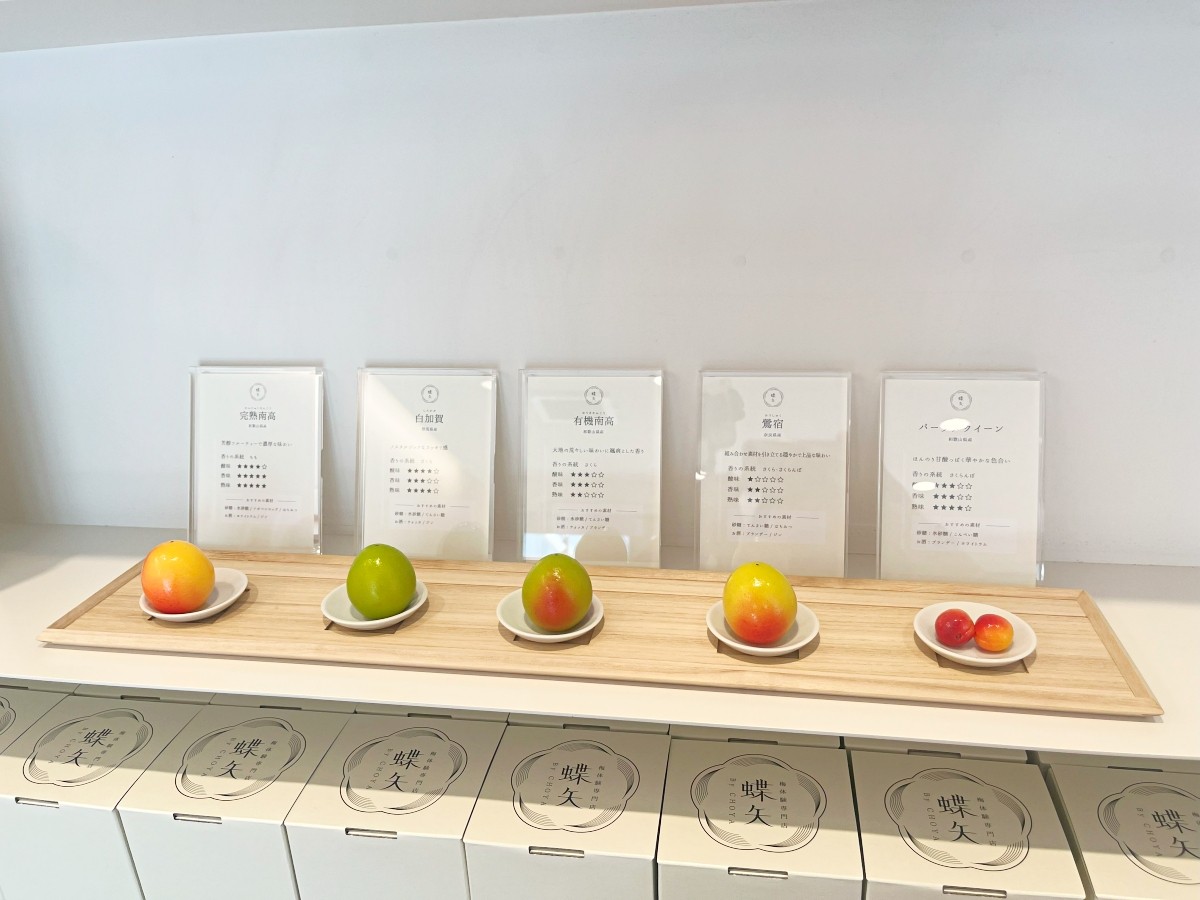
Inside, the space is elegant and white-themed, with a striking display of ume plums catching your eye.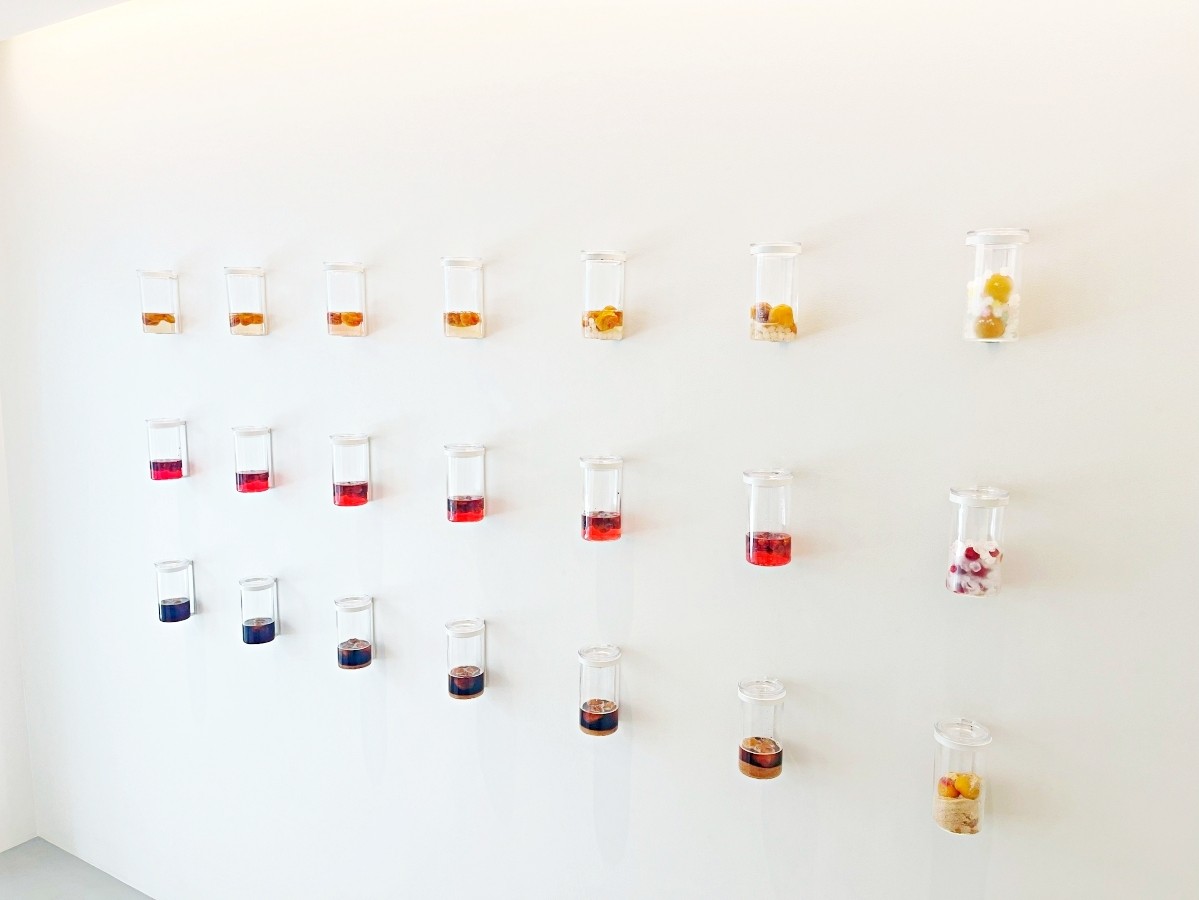
This display is said to represent the seven-day process of making plum syrup, from steeping to completion, allowing you to visually enjoy how the syrup is made.
The Plum Wine Making Experience Begins
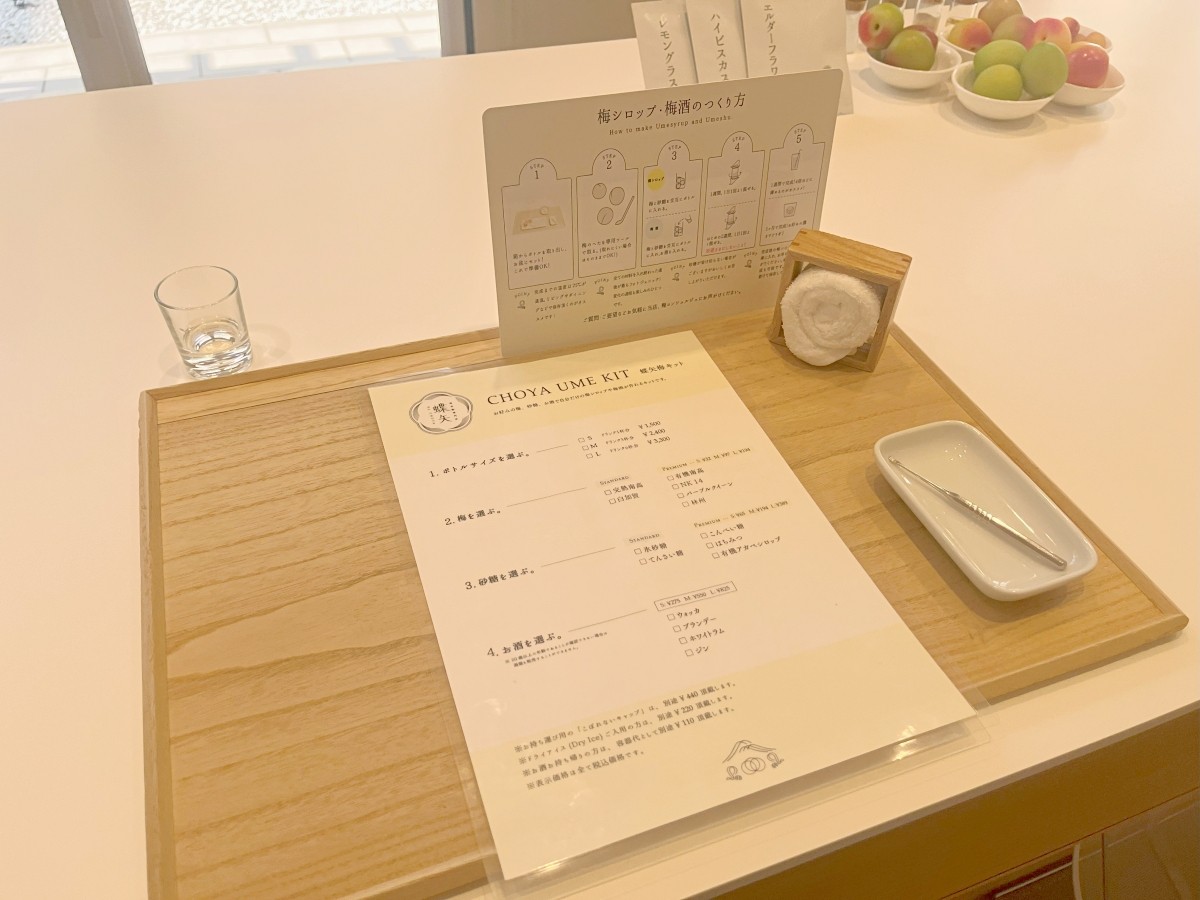
The entire plum-making experience, from selecting your ingredients to the finished product, takes about 50 minutes. You'll choose your bottle size, plum type, sugar type, and alcohol type from a wide range of options. If you're worried about having too many choices, don't be! A Ume Concierge will carefully explain the characteristics of each ingredient, and you can taste plum and sugar syrups to find your perfect combination.
1. Choose Your Bottle Size
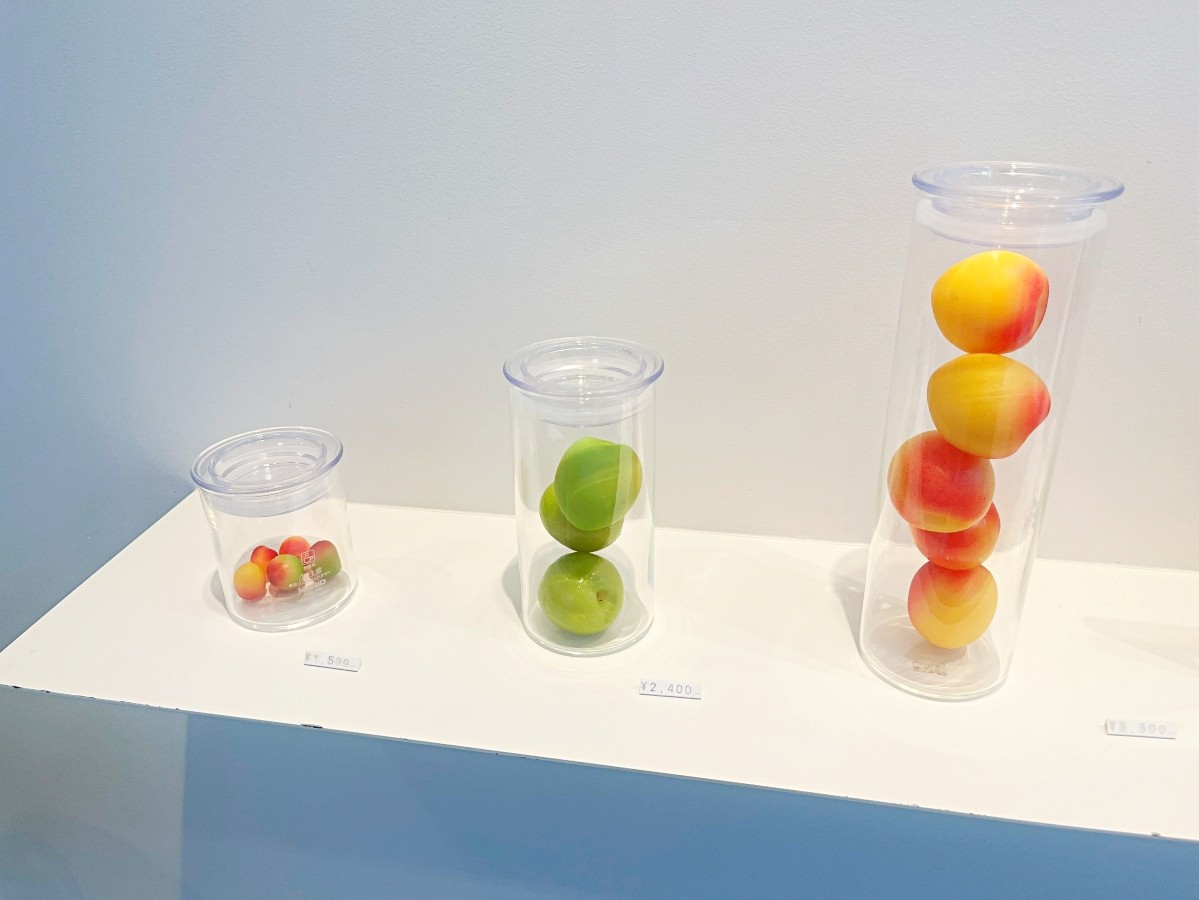
First, you decide on the size of your preparation bottle.
- S size: 1,500 yen ~ (about 1 cup)
- M size: 2,400 yen ~ (about 3 cups)
- L size: 3,300 yen ~ (about 6 cups)
There are three bottle sizes to choose from. This time, we selected the M size. If you want to make both plum wine and plum syrup, you can make more than one.
The bottles are reusable. If you bring your own bottle for a future visit, you can enjoy a discount and only pay for the ingredients.
2. Choose Your Ume Plums
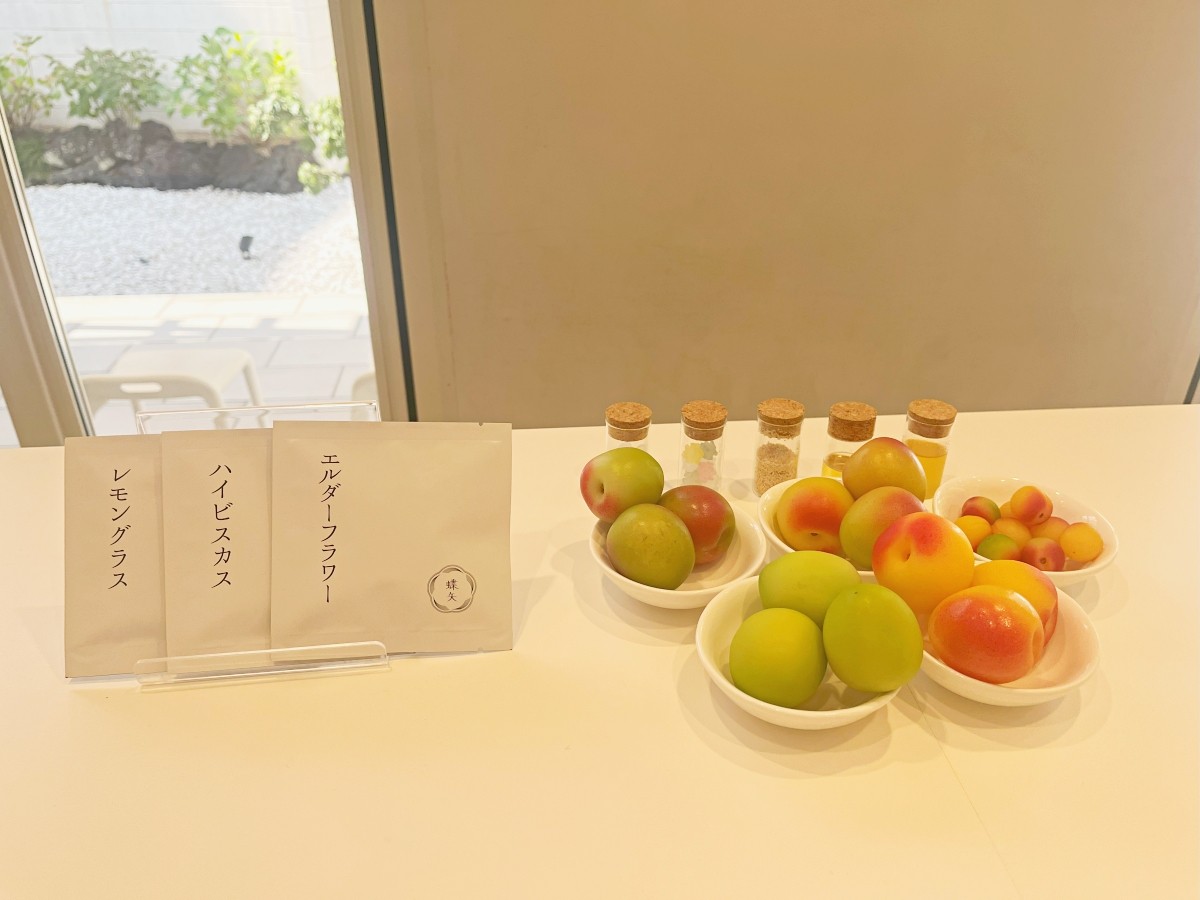
Next, you select the star of the show: the ume plums. There are five standard varieties available, and on the first Saturday of every month, a limited-edition seasonal ume is offered. If there's a special variety available during your visit, be sure to try it!
On the day we visited, we could choose from the following six types. I personally chose the Ripe Nanko plum.
STANDARD
Ripe Nanko (Wakayama Prefecture): Rich and fruity with a peachy aroma, offering a deep flavor
- Shirokaga (Gunma Prefecture): Has a nostalgic, clean, and grassy aroma
PREMIUM (S+32 yen, M+97 yen, L+194 yen)
- Organic Nanko (Wakayama Prefecture): A powerful, earthy flavor with the refined scent of cherry blossom cakes and leaves
- NK14 (Wakayama Prefecture): A youthful sweetness with a unique, herbal aroma. The name comes from the initials of "Nanko Ume" and "Kensaki Ume" from Fukui Prefecture
- Purple Queen (Wakayama Prefecture): Slightly sweet and sour with a brilliant color. Its flavor is reminiscent of cherries and acerola, and when made into plum wine, it has a fragrance similar to almond jelly
- Rinshu (Nara Prefecture, limited-time): A fresh aroma with a bittersweet hint of polyphenols, and a refreshing, soda-like taste
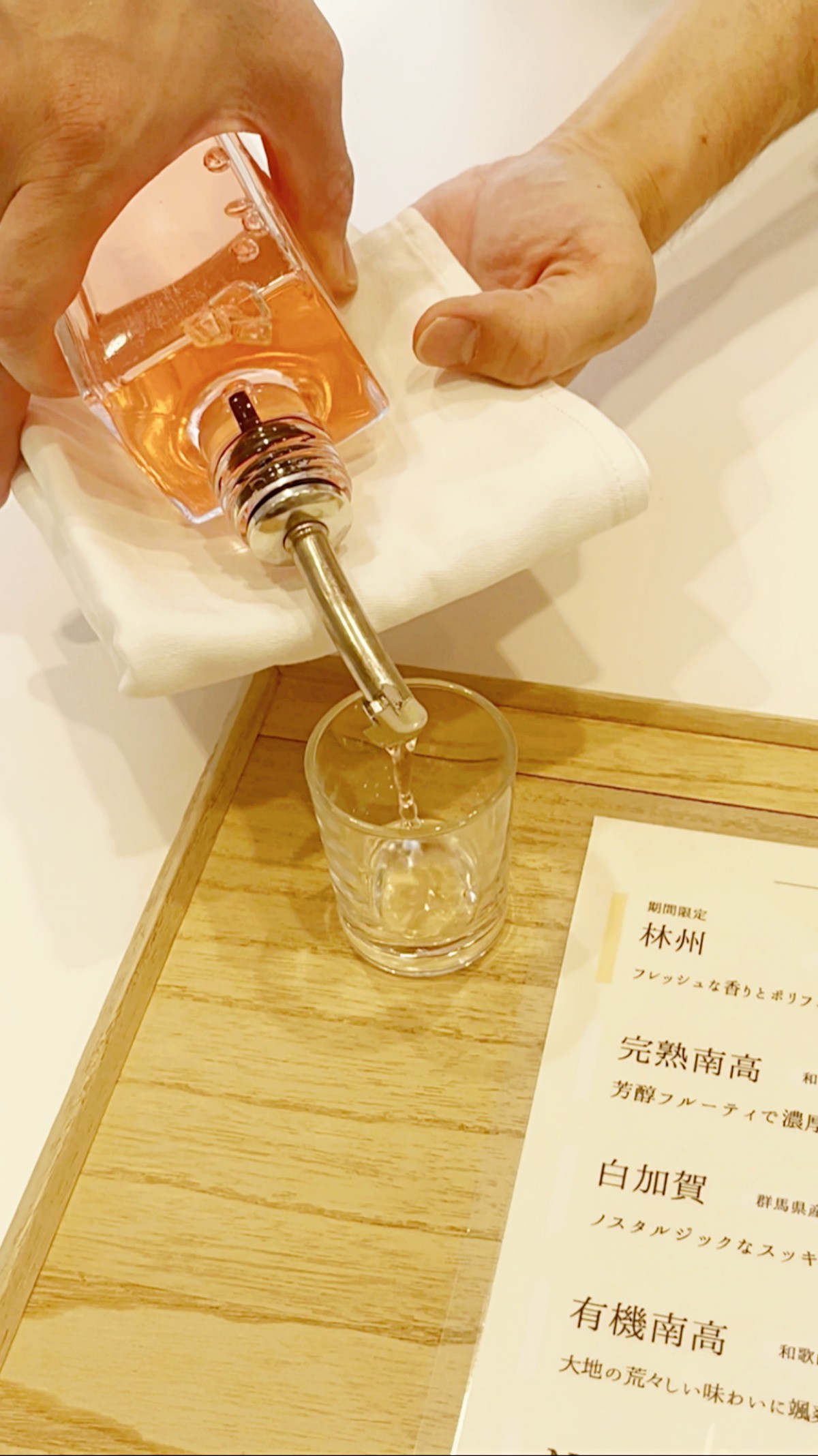
The Ume Concierge carefully explains the characteristics of each plum. It's fun to taste the samples and find your favorite flavor. Apparently, most of Choya's plum wine products are based on the Nanko variety.
3. Choose Your Sugar
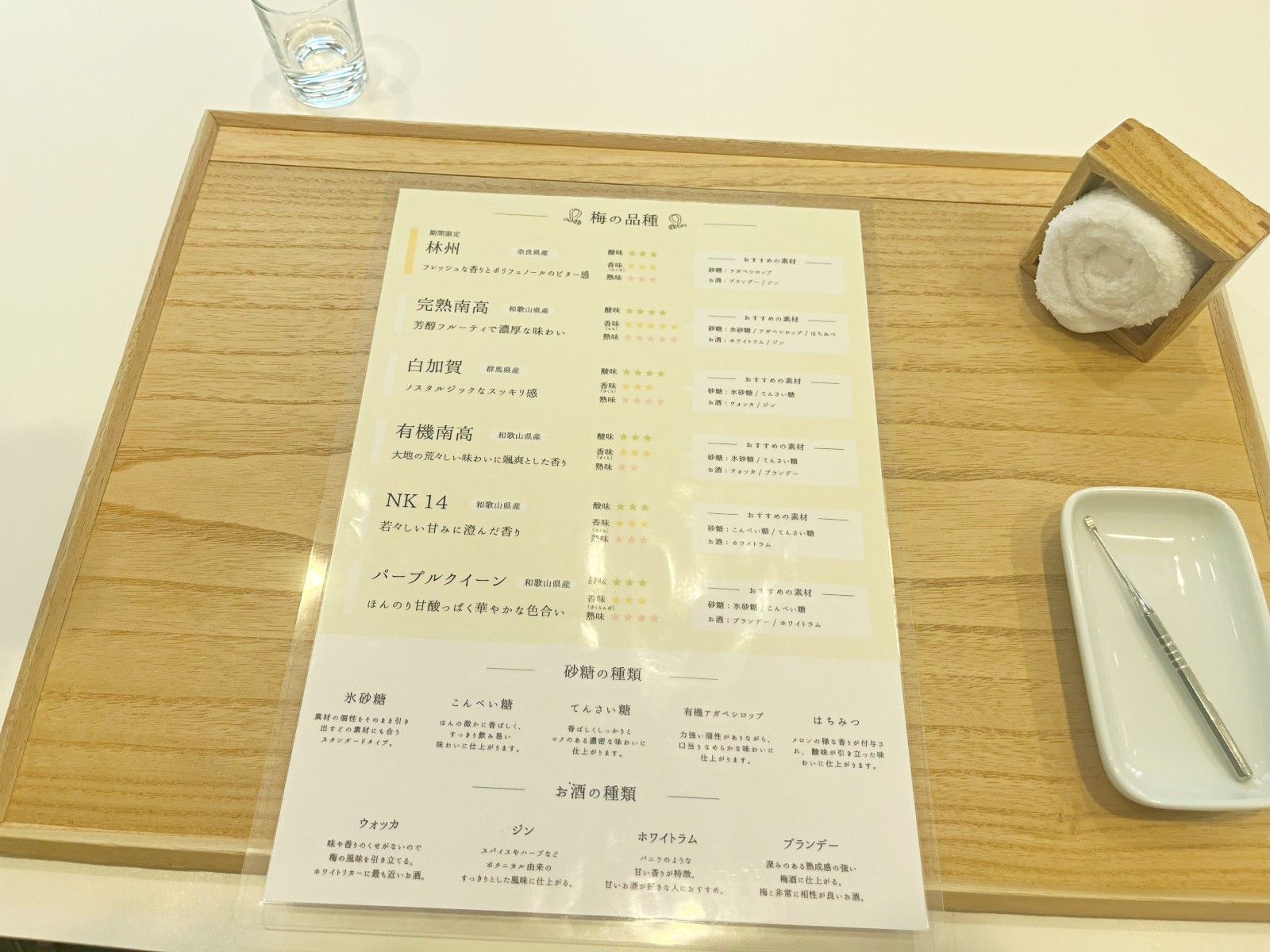
Just like the plums, you can also select from a curated lineup of five types of sugar.
STANDARD
Rock Sugar: Simply enhances the flavor of the plums. This is a common choice for homemade plum wine
- Beet Sugar: Adds a rich, full-bodied flavor, recommended for those who like brown sugar plum wine. For plum syrup, it's great for mixing with milk or drizzling over vanilla ice cream
PREMIUM (S: +65 yen, M: +194 yen, L: +389 yen)
Konpeito (sugar candies): The most popular choice due to its beautiful colors from natural dyes
- Organic Agave Syrup: A clean sweetness, recommended for those who are health-conscious
- Honey: Made from Argentinian wildflower honey, it has a smooth sweetness
Konpeito is especially popular because its colorful appearance is highly photogenic. During the tasting, I was surprised at how much the flavor of the same sugar could change depending on the combination with the plum.
If you are making plum syrup, this is where your ingredient selection ends. You simply layer the plums and sugar in the bottle, and it will be ready in a week. While plum syrup is often enjoyed as a soda mix, it's also delicious when mixed with milk or used as a topping for desserts.
4. Choose Your Alcohol (S: +275 yen, M: +550 yen, L: +825 yen)
Finally, you choose your alcohol. There are four options in the lineup.
- Vodka: Simply enhances the plum flavor, resulting in a taste similar to classic homemade plum wine
- Gin: A clean flavor with herbal notes reminiscent of a gin and tonic
- White Rum: Has a slightly sweet, vanilla-like aroma, recommended for those who prefer a sweeter plum wine
- Brandy: A deep, rich flavor, also characterized by its brownish color
Since tasting the alcohol is not possible, you'll choose based on the descriptions to find what suits your preference.
5. Make Your Plum Wine
Once you've decided on your combination, it's time to start making the plum wine.
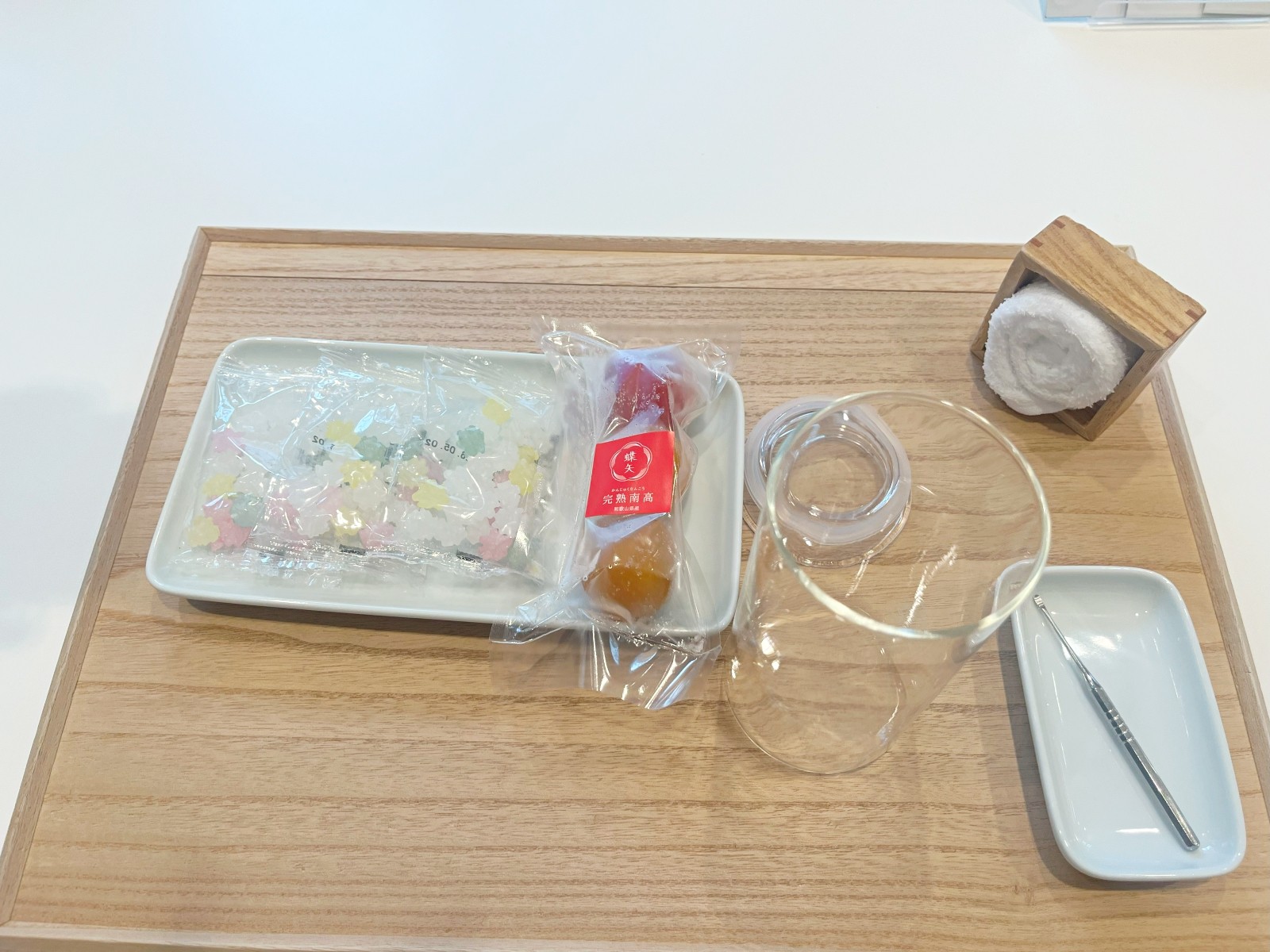
This time, I chose the combination of "Ripe Nanko × Konpeito × White Rum." The process is surprisingly simple: first, you use a special tool to remove the stems from the plums.
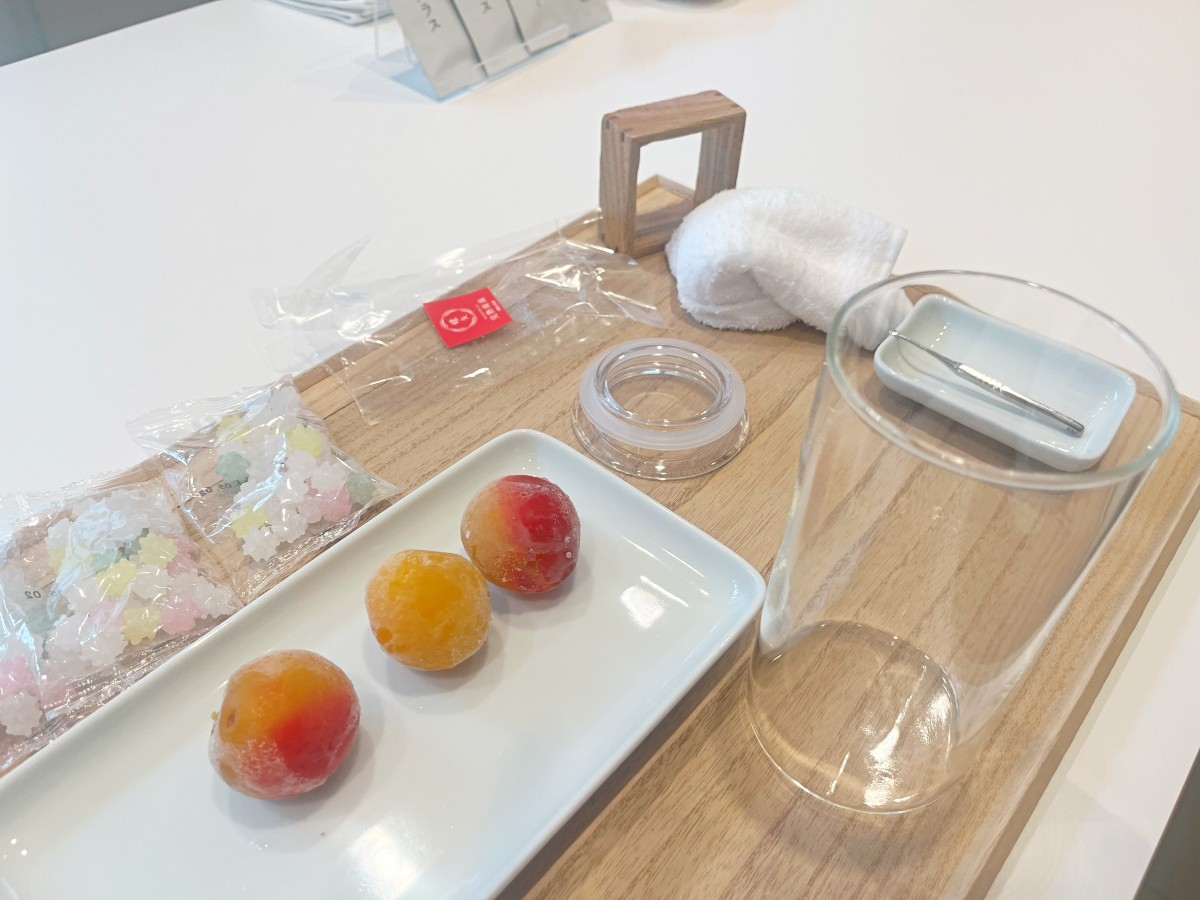
Then, you layer the plums and sugar in the bottle, and finally, you pour in the alcohol.
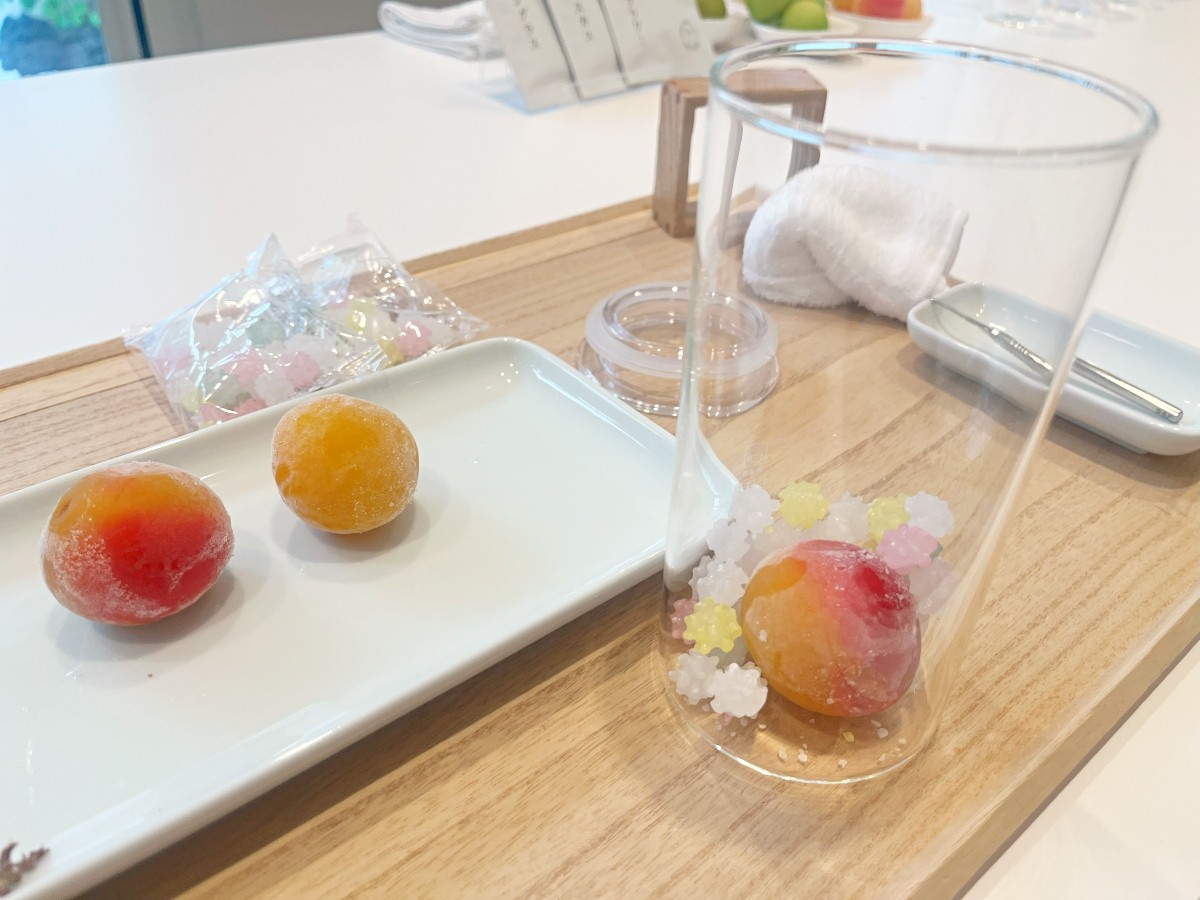
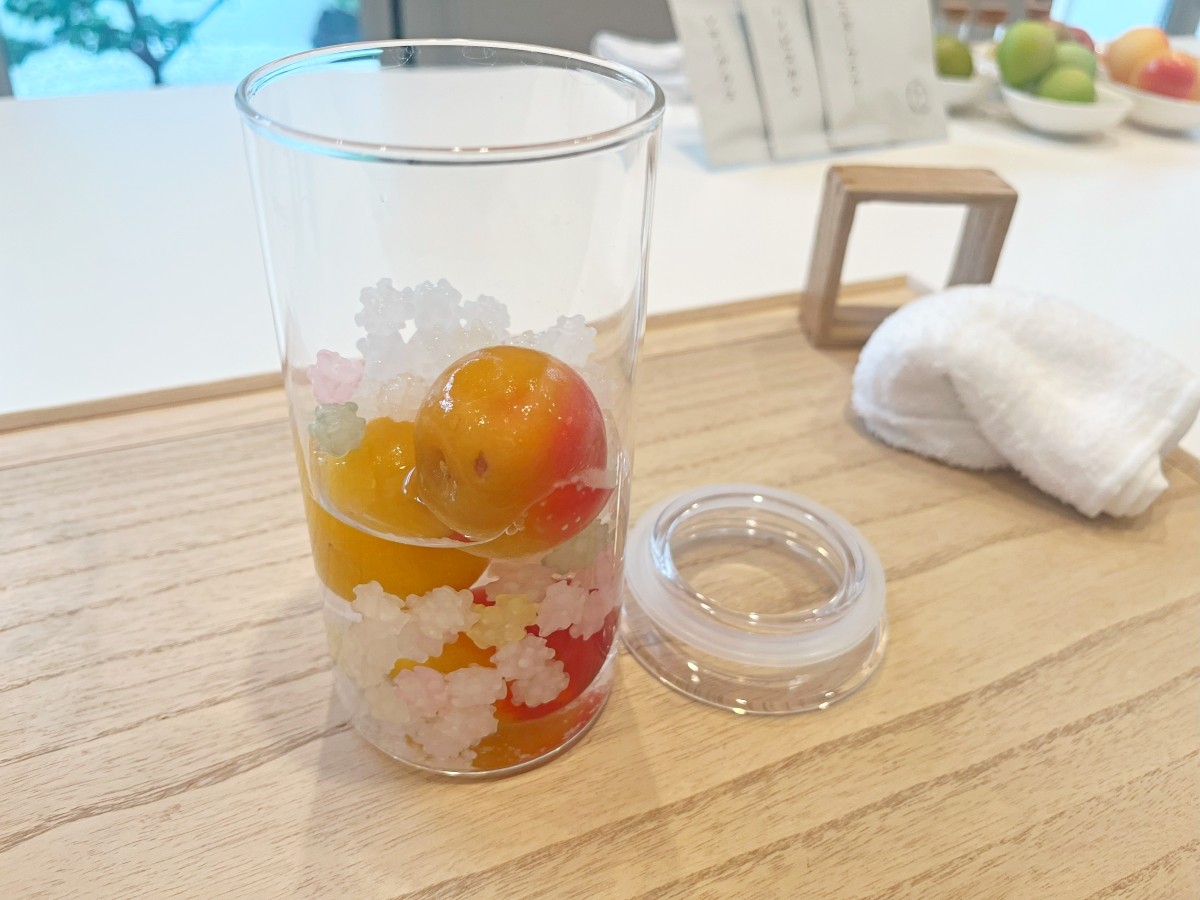
For the first two weeks, you shake the bottle once a day to mix it well and store it in a cool place away from direct sunlight. It will be ready in one month, and you can enjoy your unique plum wine on the rocks, with soda, or in any way you prefer.
Don't Forget to Check Out the Takeout Drinks!
After your experience, be sure to try one of the takeout drinks made with the plum syrup sold at the counter. With daily specials and seasonal limited-time menus, there is always something new to enjoy.
Some drinks even contain a whole ripe Nanko plum, which is a must-have for any plum lover. Even if you're not participating in the plum-making experience, you can easily purchase a drink at the counter, so be sure to stop by during your visit to Kamakura.
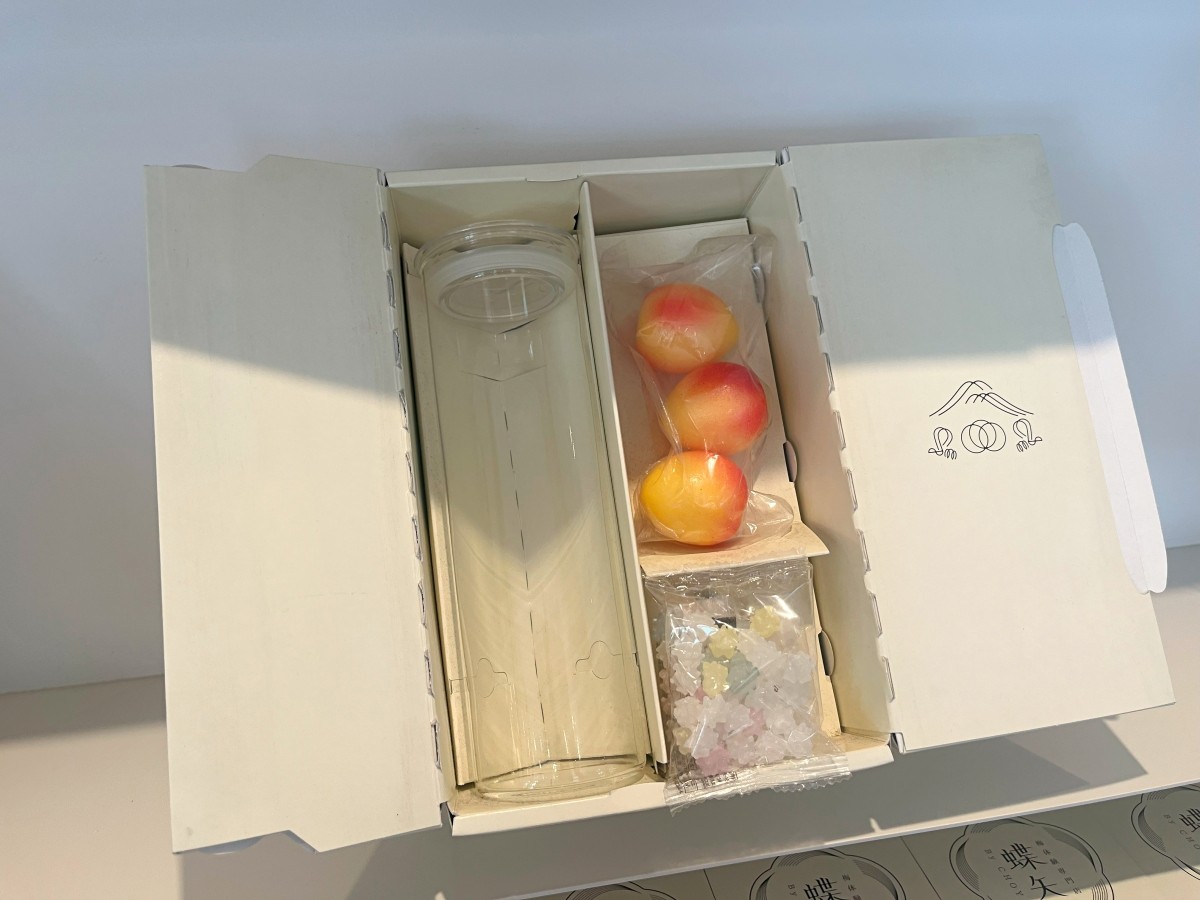
For those who want to enjoy the DIY experience at home or give it as a gift, there are also CHOYA Ume Kits available, which make it easy to make plum syrup or plum wine at home.
The Plum Experience Requires an Advance Reservation! How to Book?
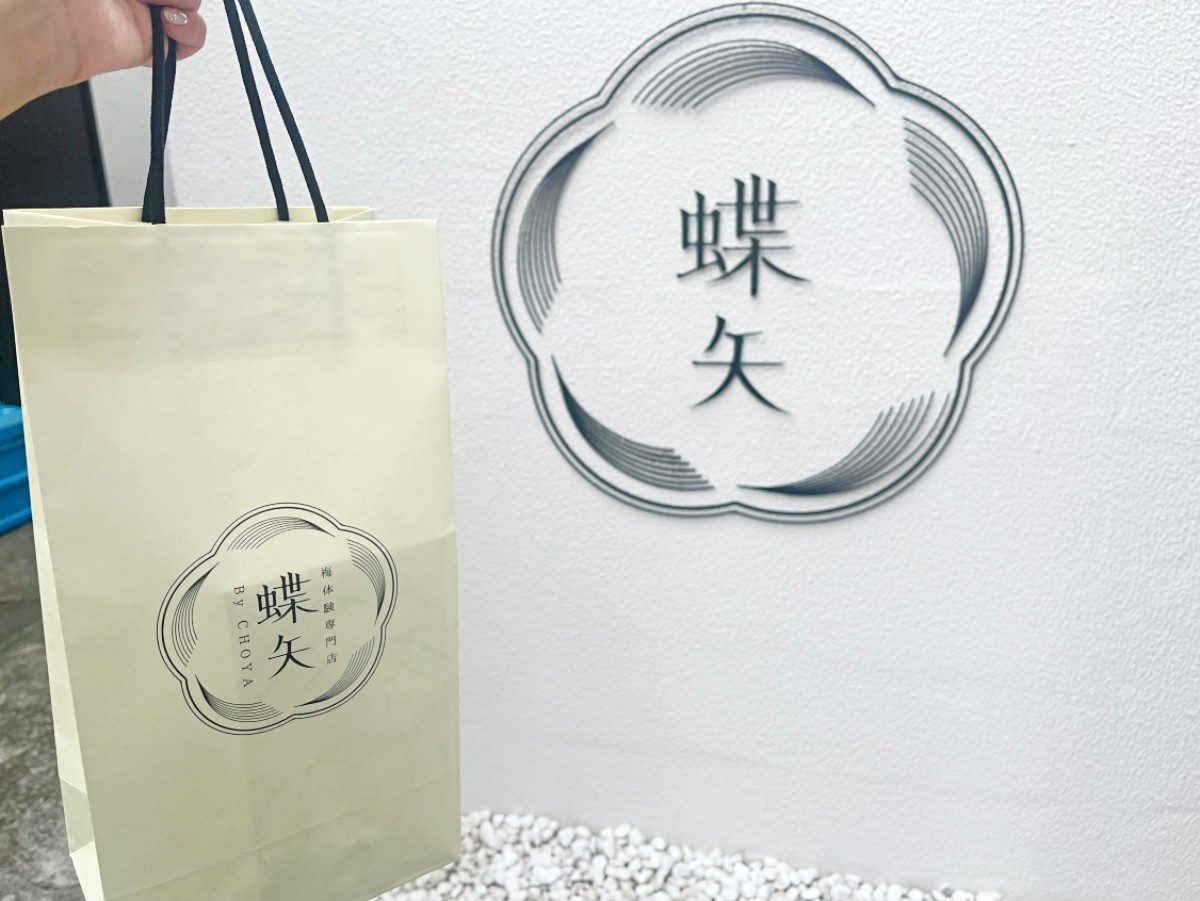
The plum experience at CHOYA is very popular, so advance reservations are a must. The capacity is 8 people, and each person is required to make at least one bottle.
Reservations open at midnight (JST) two weeks in advance on the official website's reservation page, so it's a good idea to check early.
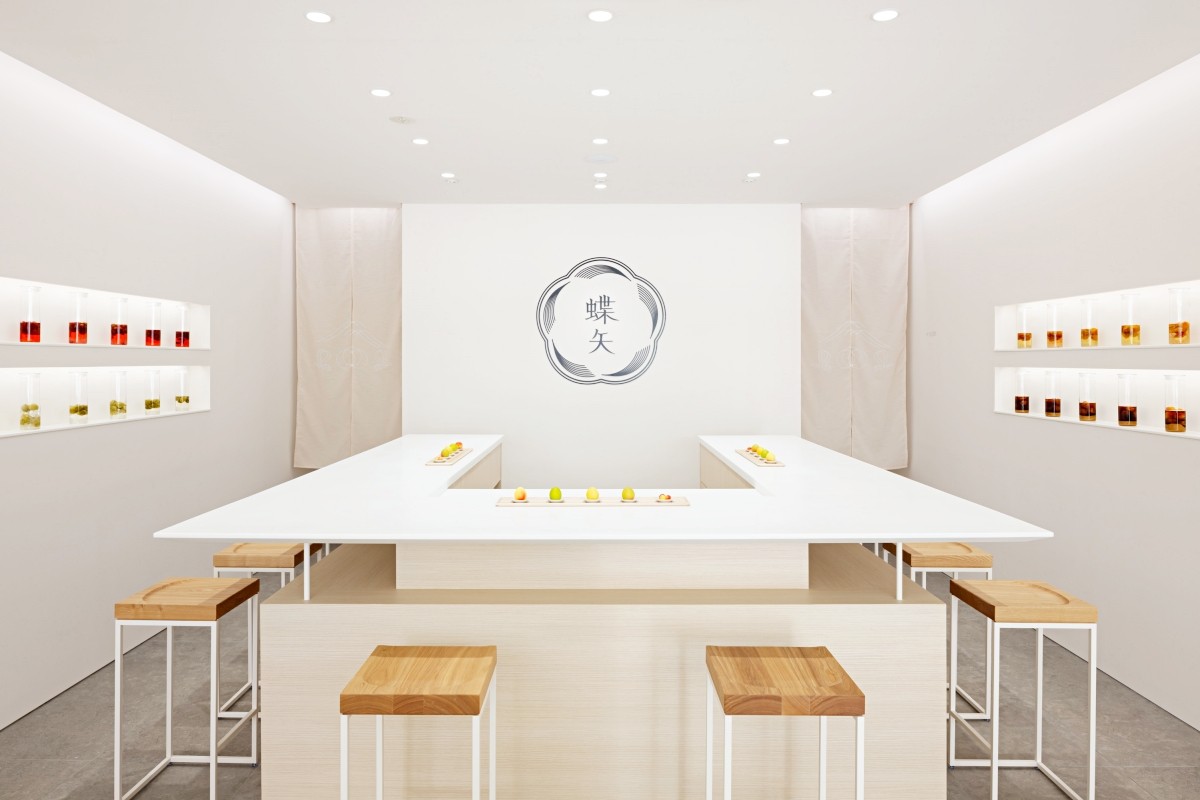
In addition to the Kamakura store, there are also locations in Kyoto's Rokkaku and Sanjo neighborhoods. The Kyoto Sanjo store, which opened in June of this year, is geared towards international visitors, offering the experience in English and providing multilingual brochures so that tourists can also feel at ease.
- Kamakura Store Reservation Site: Here
- Kyoto Rokkaku Store Reservation Site: Here
- Kyoto Sanjo Store Reservation Site: Here
Choya Kamakura Store
Address: Kamakura Onarimachi Hakua 1F, 11-7 Onarimachi, Kamakura City, Kanagawa Prefecture
- Access: 1-minute walk from the West Exit of Kamakura Station
- Opening Hours: [Weekdays] 10:00 AM to 6:00 PM
[Weekends] 10:00 AM to 7:00 PM - Closed: New Year's holidays
- Official Website: Here
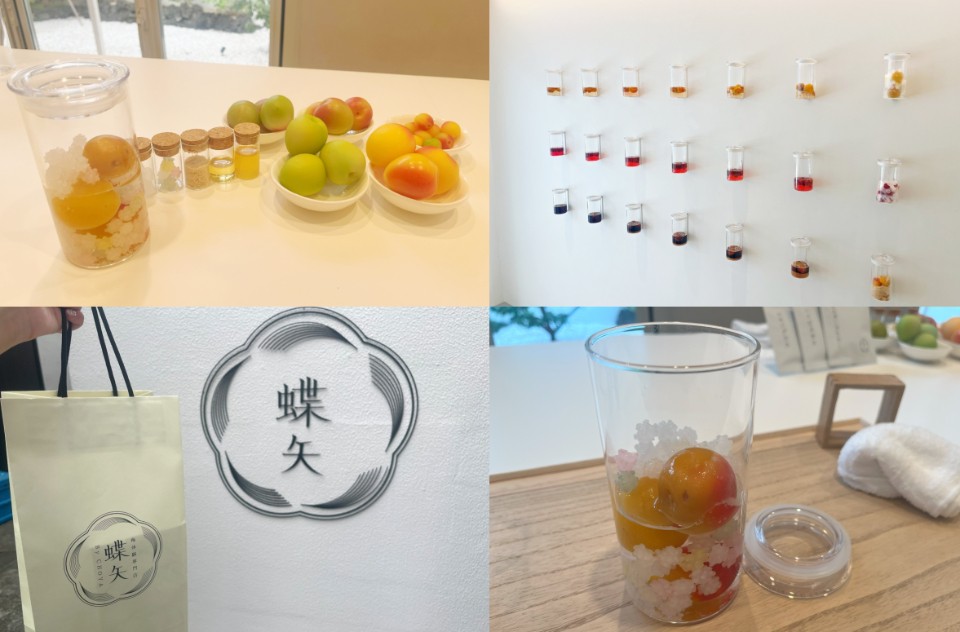
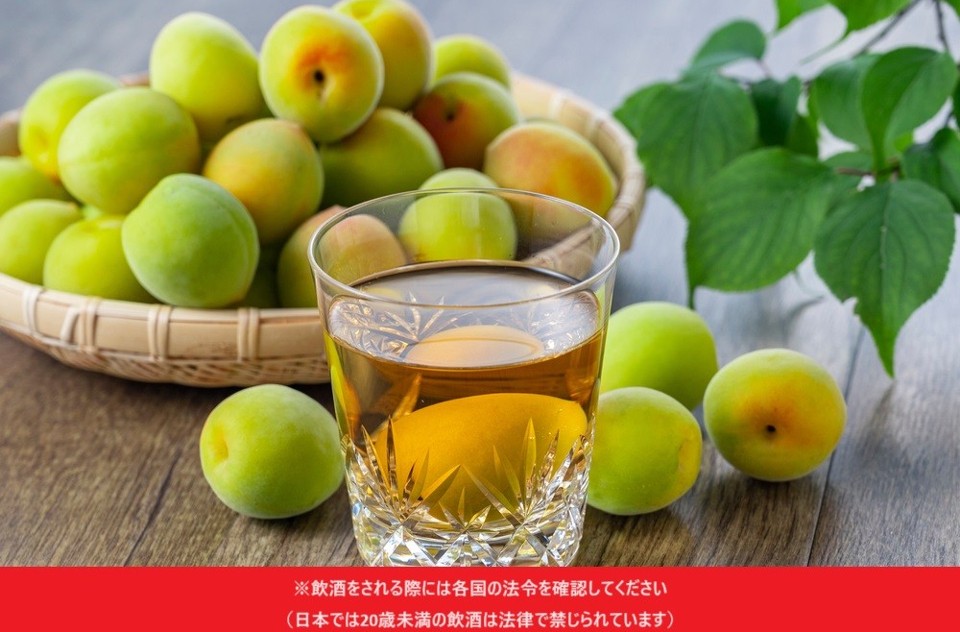
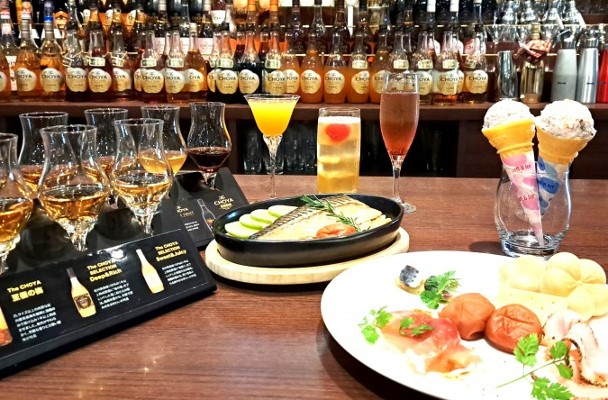
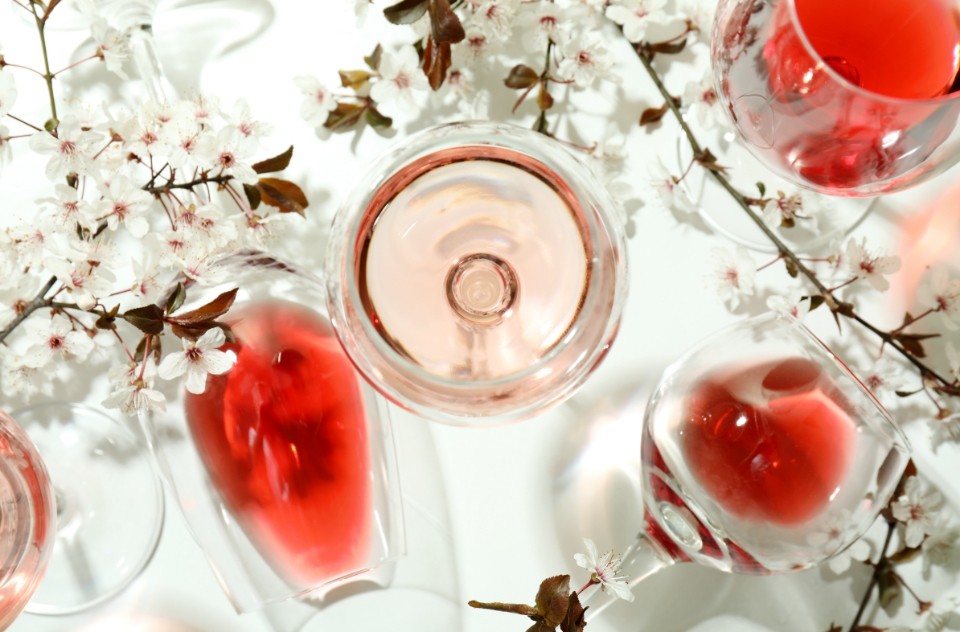
Comments